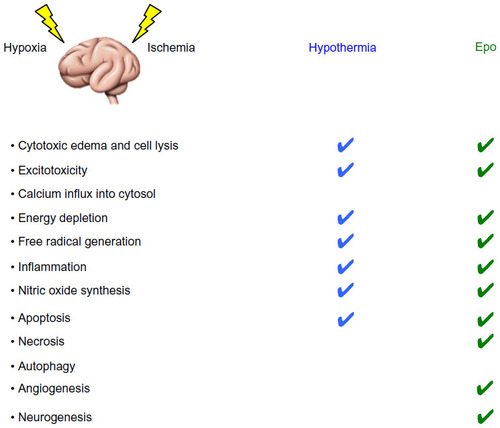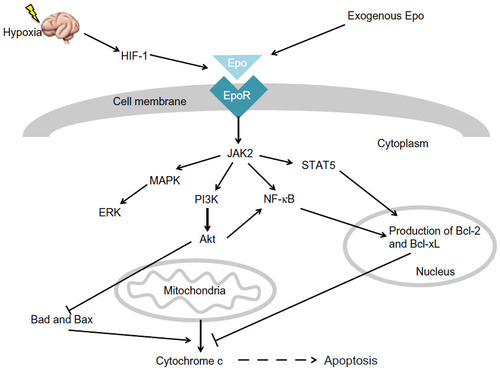Figures & data
Figure 1 Comparison of mechanisms of neuroprotection between therapeutic hypothermia and erythropoietin (Epo).

Figure 2 Molecular mechanism of erythropoietin (Epo).

Table 1 Neonatal animal studies of Epo
Table 2 Human infant studies of Epo
